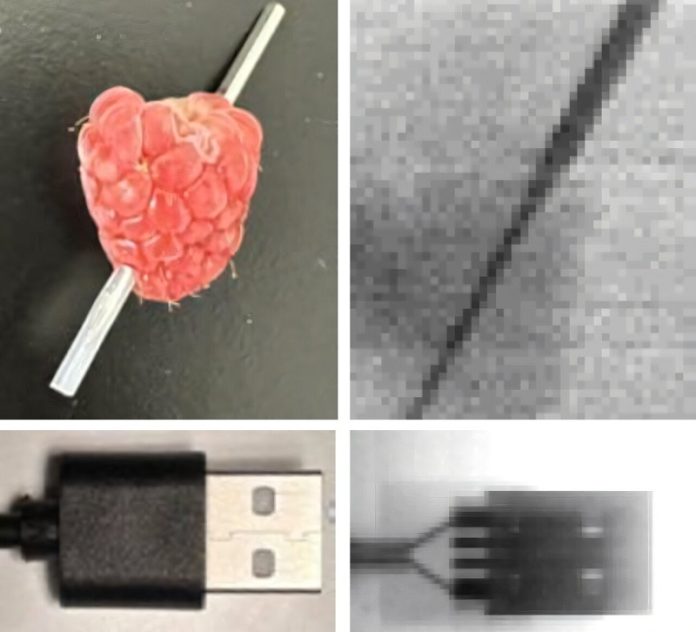
X-rays play a major role in medical exams and industrial checks, from scanning broken bones to inspecting luggage at airports.
But X-rays also come with risks.
Since they produce ionizing radiation—a high-energy type of radiation—they can be dangerous in large or repeated doses.
This concern has sparked a search for ways to make X-rays safer by reducing the amount of radiation used in each scan.
A team of researchers has developed a new type of X-ray detector that may be a step toward safer, lower-dose X-rays.
This highly sensitive, foldable detector is described in a study published in ACS Central Science.
According to lead author Omar F. Mohammed, this new device “reduces detection limits,” meaning it can pick up X-ray signals with less radiation, leading to better safety and energy efficiency in both medical and industrial imaging.
X-rays are a form of electromagnetic radiation, like visible light but with much higher energy.
This allows them to pass through soft tissues in the body while getting absorbed by denser materials, like bone, which creates the contrast seen in X-ray images, known as radiographs.
Although a single X-ray scan doesn’t pose a high risk, repeated or long-term exposure can be dangerous. People who regularly work with X-rays, such as technicians, or equipment that undergoes regular X-ray exposure, are especially at risk.
The problem is that reducing the X-ray dose also lowers the quality of the image, making it harder to see details in the radiograph.
To solve this, researchers need to create more sensitive detectors that can produce high-quality images with less radiation. Mohammed and his team at the King Abdullah University of Science and Technology (KAUST) have created such a device by improving the technology inside the detector.
The team focused on reducing “dark current,” a type of background noise that interferes with the detector’s sensitivity to X-rays. To do this, they used a special type of crystal, methylammonium lead bromide perovskite, which is known for its X-ray detection properties.
They arranged these crystals in a “cascade” setup, an electrical configuration that reduced the dark current almost by half. This change increased the device’s sensitivity to X-rays by five times compared to previous detectors using the same crystal but without the cascade setup.
With this new detector, the team was able to capture clear, detailed X-ray images at lower doses of radiation.
They successfully tested the detector by capturing fine details, like a metal needle going through a raspberry and the internal parts of a USB cable, proving its ability to reveal subtle features in both medical and industrial applications.
This foldable and sensitive detector could pave the way for safer X-ray machines in hospitals and industry, reducing radiation exposure and providing clear images for better diagnostics and monitoring.
The researchers hope this technology will soon be applied to commercial X-ray devices, helping to make medical imaging and industrial scans safer for everyone.
If you care about health, please read studies about how Mediterranean diet could protect your brain health, and the best time to take vitamins to prevent heart disease.
For more health information, please see recent studies that olive oil may help you live longer, and vitamin D could help lower the risk of autoimmune diseases.



